Llegamos
We made it. Here’s how:
- Drive 20 minutes to the Kalispell airport.
- Fly to Seattle; 1.5 hours
- Train to the Philadelphia departure gate; 1o minutes
- Fly to Philadelphia; 5 hours
- Walk two miles to the Madrid departure gate
- Fly to Madrid; 7.5 hours
- Walk forever to find the train to the exit of the EXTENSIVE Madrid airport; 20 minutes and 15 minutes
- Bus to Madrid’s Atocha train station; 1 hour
- Kill two hours in Madrid waiting for the Renfe AVE train
- High speed AVE train to Seville; 2.5 hours
- Taxi to our B and B in the Tirana neighborhood of Seville; 20 minutes.
From start to finish, a bit over 24 hours.
Then we walked around Tirana, found a good place for tapas (ratatouille, eggplant with salmonejo, fried hake with aioli, and tuna with roasted red peppers–not to mention the olives and bread that came with the small cervesas which we ordered expressly to get the olives and bread), across the street from which was a good helado stand.
The B and B (Alfereria 59) is perfect and the host couple is wonderful. Lots of information and tips.
A few images taken at sunset on our walk. More to come.
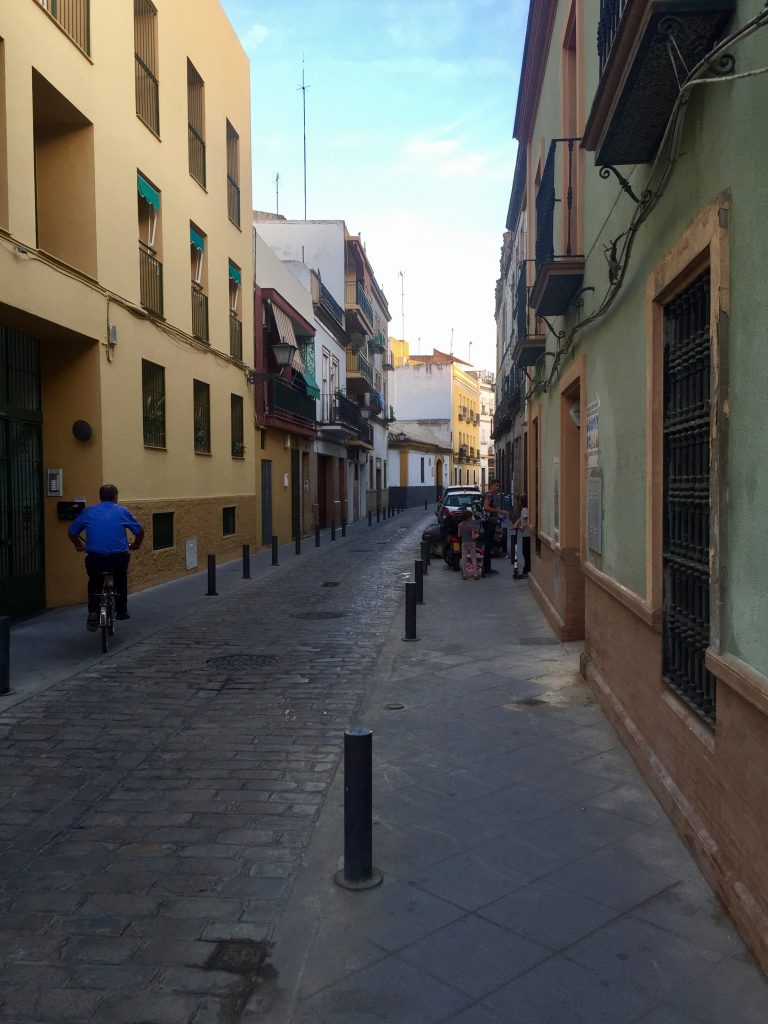
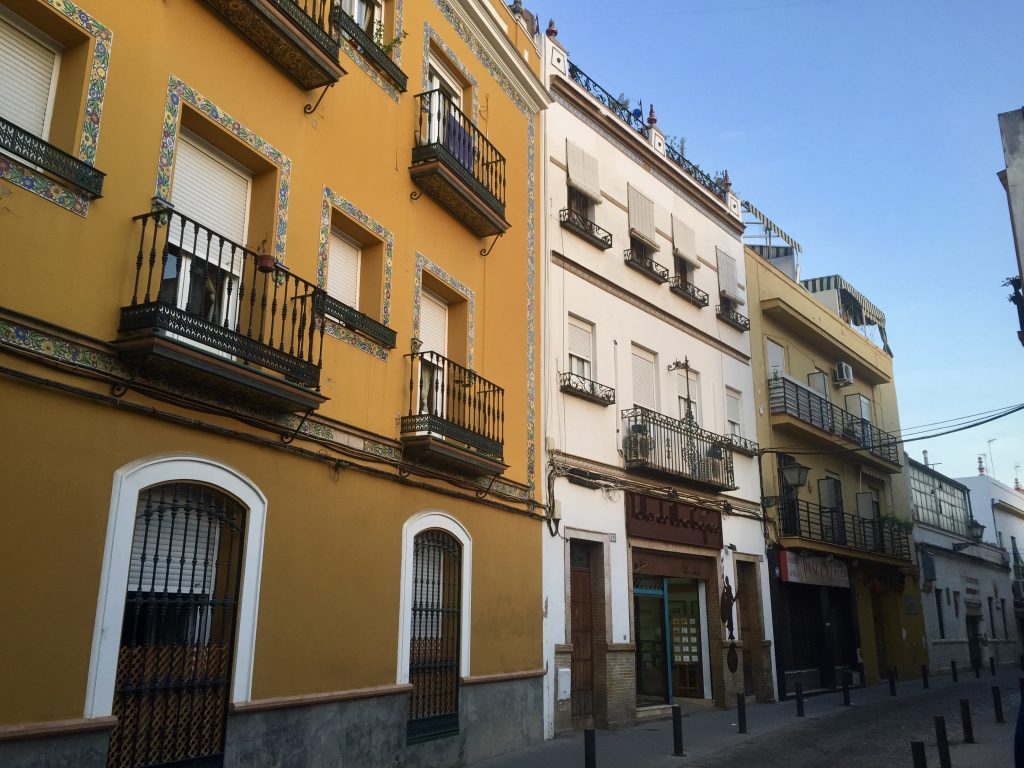
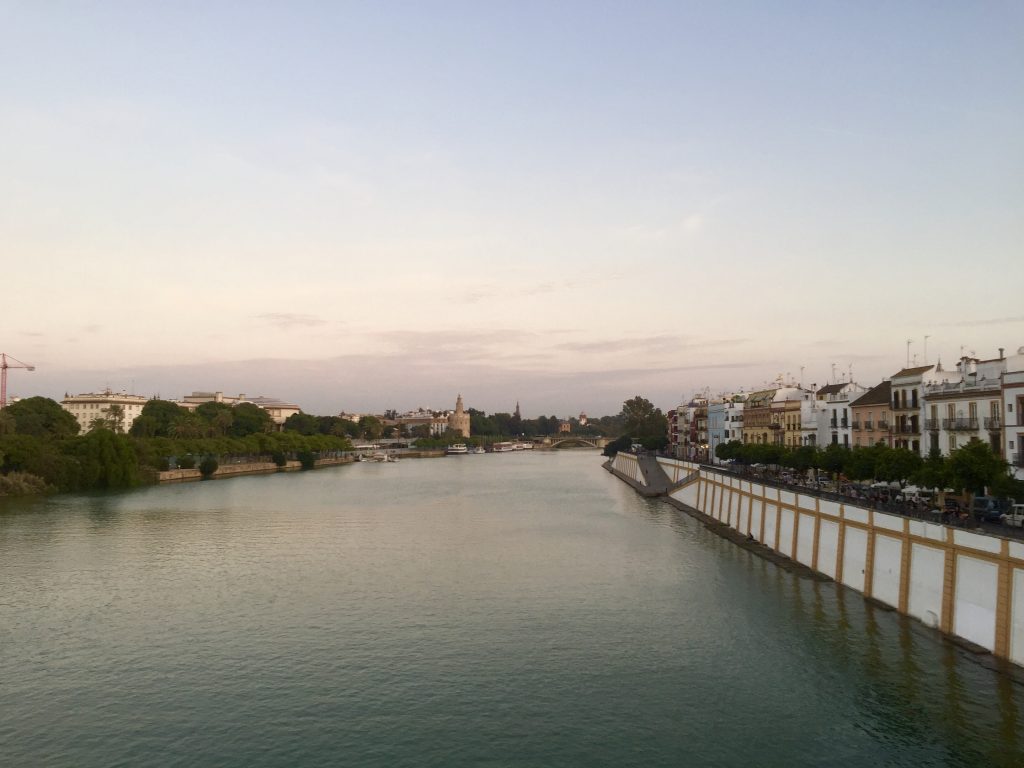
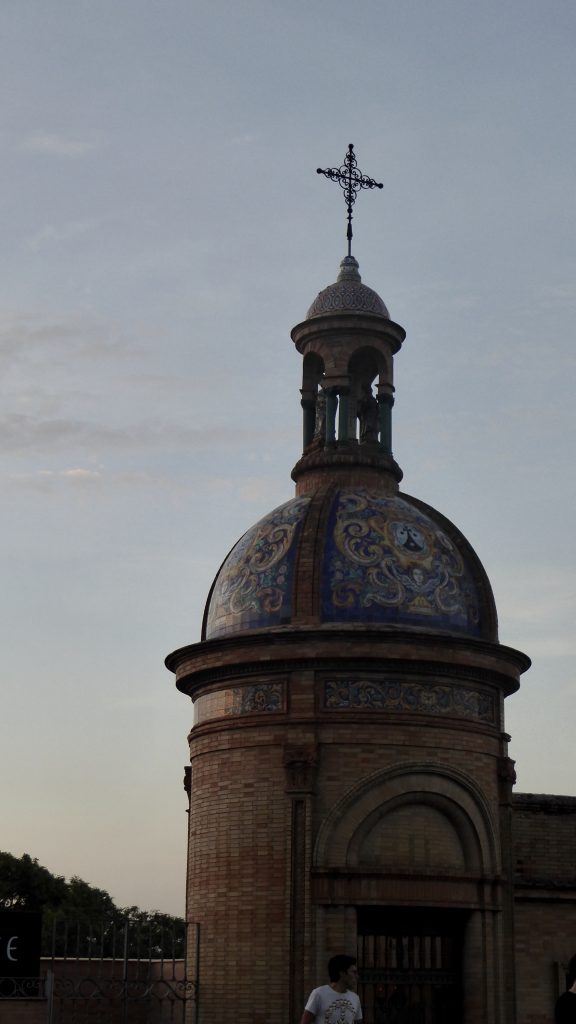
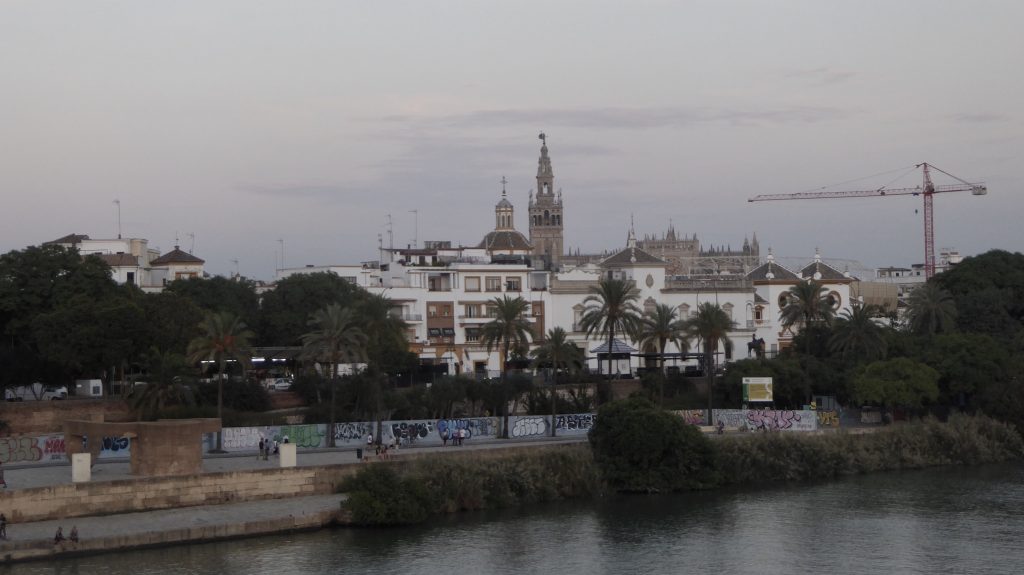
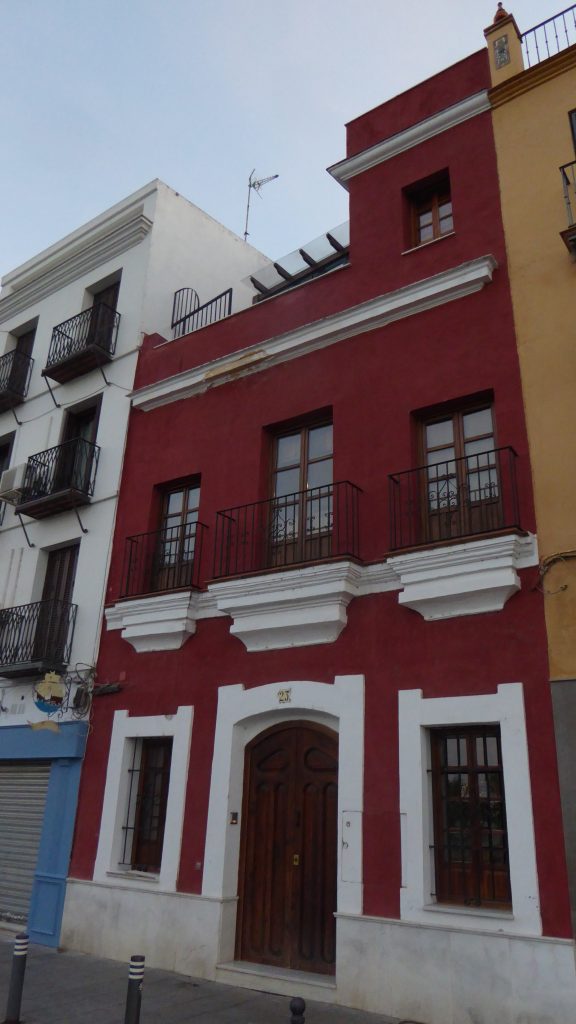
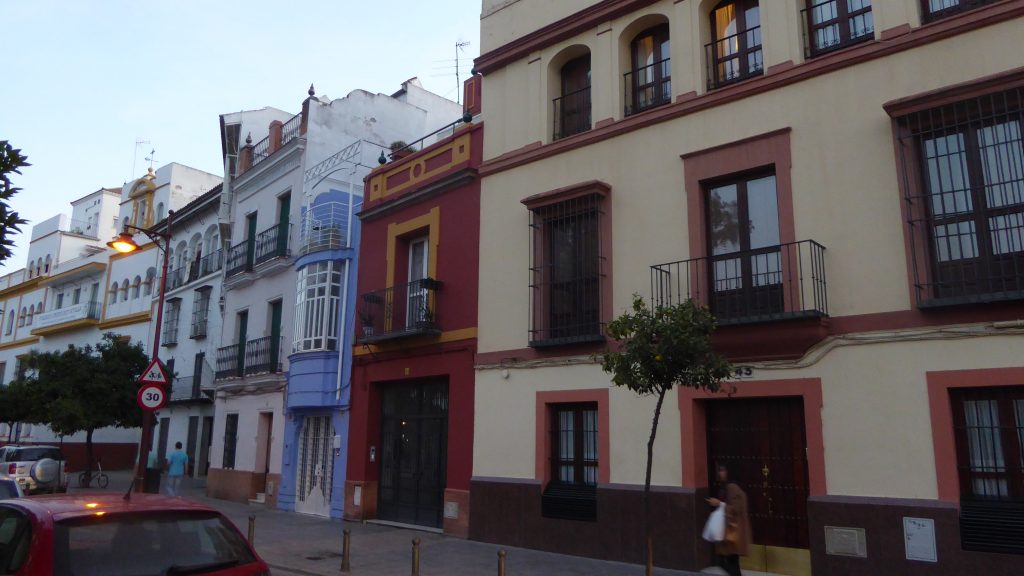
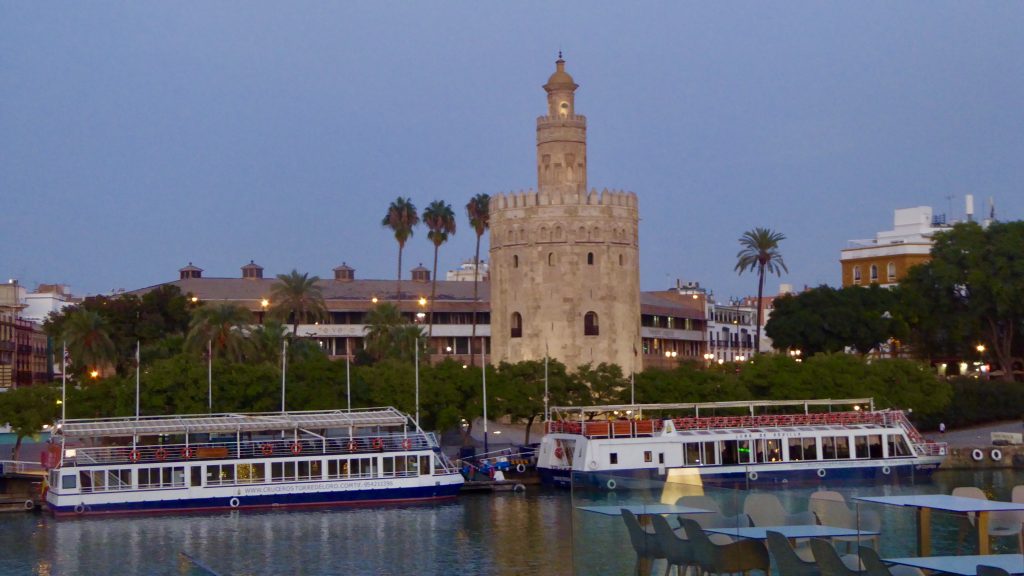
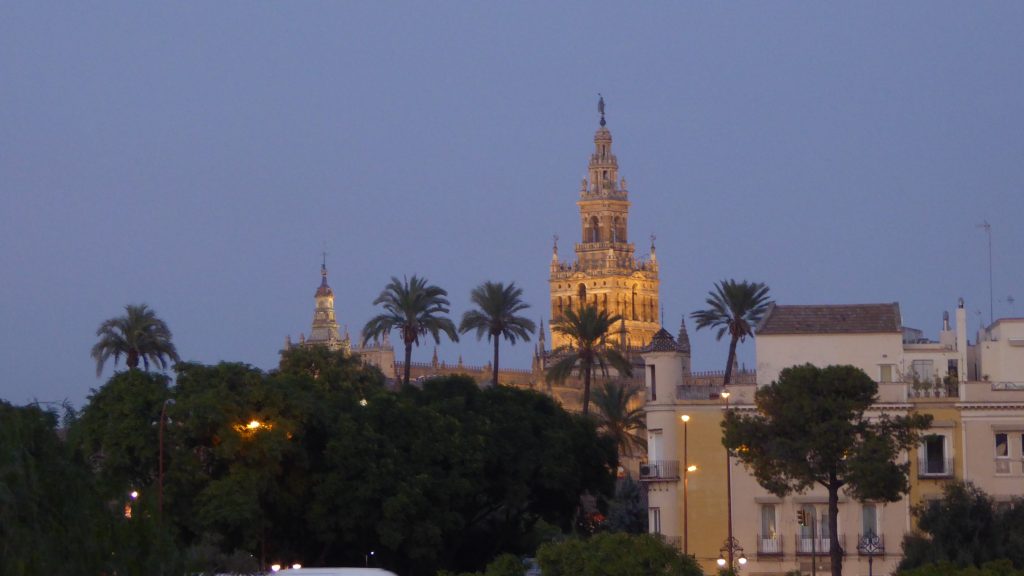
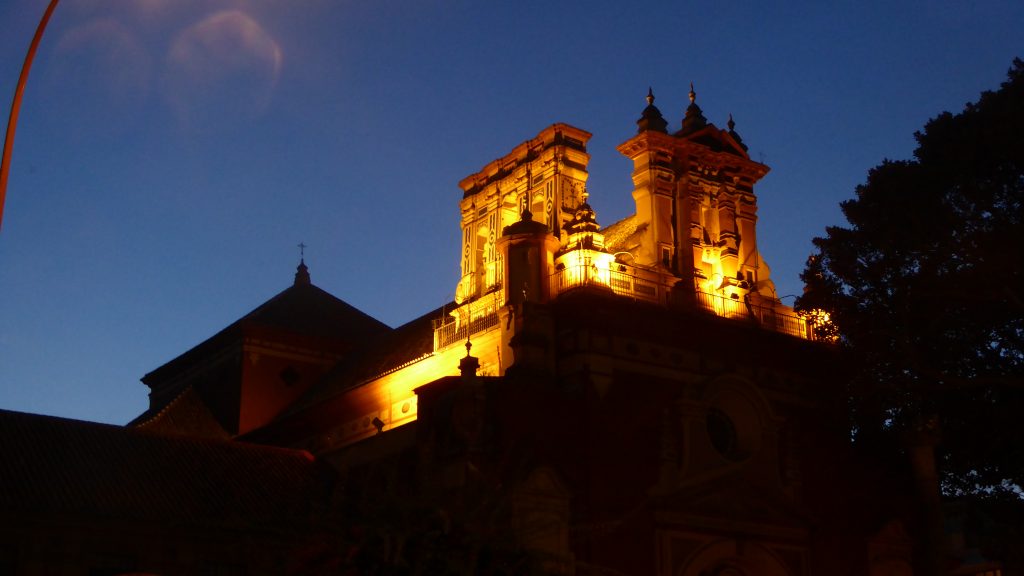
7 thoughts on “Llegamos”
Excellent! I am glad that you arrived safely. Seville remains my favorite Spanish city (of those I have visited; possibly Bilbao is a marvel, but I have my doubts).
I wonder if they are still steam-cleaning the trees. Possibly that was a once-off thing for Semana Santa when I was there.
I can offer you exactly two mildly interesting facts related to Seville:
In the Thpanish version of “My Fair Lady”, the killer phrase pertaining to precipitation is
“La lluvia en Sevilla es una maravilla”, which tackles the difficulty that some regional speakers have with the “ll” sound.
The No 8 Do sign that you may be seeing around the place has the following origin story. Either that, or my teachers were pulling the wool over our eyes.
http://gaelstat.blogspot.com/2007/04/n0-8-d0.html
Have a wonderful time! It’s also an excellent time not to be in the U.S., given the way the toxic Cheeto has taken total control of the media.
How embarrassed am I that I missed the My Fair Lady reference. As an excuse, I’ll use the fact that it was pouring in Madrid when we arrived and we were relieved to find Seville dry, at least in that sense. They don’t need to steam clean the orange trees now because the humidity is performing the same feat.
Thunderstorms predicted tomorrow. I think we’ll take a train to Córdoba for the day…
You have done your homework and are now snarfing up the rewards…love the history architecture and food mix…thanks for sharing.
Thanks, Sue. We’re also the beneficiary of a wonderful B and B host who loves to talk about the city and it’s history. He has steered us to several out of the way Roman sites that have been or are in the process of being excavated. The story is an interesting one. The Quadalquivir River used to flood regularly, converting the city with new layers of sand each time. Roman ruins are buried under Morrish ruins which are buried under Christian ruins. Many times, the site of a Roman Temple became the site of a mosque which became the site of a cathedral. Stones, columns, and other elements from one era were used in subsequent eras, resulting in some interesting architecture and some amazing excavations.
Now… officially jealous!
I say that the four of us should come back here one day soon.
Calle Betis on the river! Love love. Una cana (don’t know how to put a tilde over the n via iPad) is just the best thing…